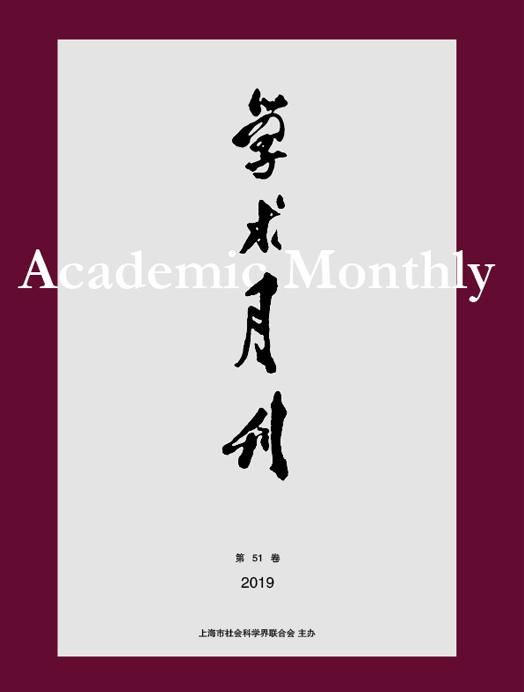Citation:
Fan GAO and Wei LI. How Does the Reproduction of Informal Institutions in Rural China Affect Farmers’ Cooperative Organizations[J]. Academic Monthly, 2021, 53(11): 60-76.

How Does the Reproduction of Informal Institutions in Rural China Affect Farmers’ Cooperative Organizations
-
Abstract
As an important component of rural institutional system, informal institution is a vital factor that influences the behaviors and choices of farmers. This paper sets forth the correlation mechanism of social ties, informal institutions and cooperative behaviors and builds a theoretical framework for the reproduction of informal institutions. Moreover, this paper stresses that the functions of informal institutions in Chinese rural areas can be divided into “defensive type” and “explorative type”, and their reproduction plays different roles in the number and scale characteristics of farmers’ cooperative organizations. Following the logical deduction, this paper takes earthen fortresses in Datian County, Sanming City, as an indicator to measure the “defensive” function of informal institutions, and probes into its influence on rural organizations for economic cooperation. The empirical results show that earthen fortresses have a significant positive impact on the number of economic organizations in its villages, while it has a negative impact on the average scale of agricultural cooperatives, which does not appear in the manufacturing industry. These empirical results support the theoretical hypothesis. This paper suggests that at this stage, China’s rural modernization should advance agricultural scale management, meanwhile, this process should notice the industrial differences in the role played by informal institutions and stick to two standards—farmer-centric orientation and moderate scale management.
-

-
References
-
Access
-
-
[1]
Haolong XU
, Ming LU
. Solving the Agricultural Dilemma in China: Farm Scale and Agricultural Competitiveness from International View. Academic Monthly,
2021, 53(6): 58-71.
-
[2]
Shao’an HUANG
, Wei WANG
, Caiquan BAI
. Informal Institutions and North-South Economic Gap in China. Academic Monthly,
2023, 55(3): 45-57.
-
[3]
Yuan LIU
, Pei LU
. Study on the Cooperative Movement and the Agricultural Productivity in New China. Academic Monthly,
2019, 51(3): 56-69.
-
[4]
. . Academic Monthly,
2016, 48(12): 149-160.
-
[5]
YUAN Xiaoyan
. City Size,Service Development and Female Migrants Employment. Academic Monthly,
2023, 55(9): 58-67.
-
[6]
Jian WEI
. Large-scale Reallocation of Factors and the Lubrication of Public Ownership. Academic Monthly,
2020, 52(4): 45-54.
-
[7]
. . Academic Monthly,
2016, 48(06): 177-184.
-
[8]
YE Min
. Revitalized Development:The New Local Operation of County Government. Academic Monthly,
2023, 55(11): 110-122.
-
[9]
Yilong WU
. Difficult Position and Theoretical Error of Collective Business Construction Land Market. Academic Monthly,
2020, 52(4): 118-128, 141.
-
[10]
Zhenzhong WANG
. Business Management and Social Life of Bibliophile Wang Qishu in Early Qing. Academic Monthly,
2019, 51(1): 164-184.
-
[11]
Da’an HE
. Network Cooperation in Investment and Management of Enterprises in the Internet Age. Academic Monthly,
2020, 52(11): 32-40.
-
[12]
Dongling LIU
. Creation Society, Bohemia and Proletariat Literature. Academic Monthly,
2019, 51(3): 140-150.
-
[13]
LI Mengmeng
. The Impact of Rural Collective Operating Construction Land Entering the Market on the Income Gap between Urban and Rural Areas. Academic Monthly,
2023, 55(10): 49-60.
-
[14]
. . Academic Monthly,
2017, 49(07): 88-98.
-
[15]
Huihua NIE
. From Collusion to Cooperation between Government and Business. Academic Monthly,
2020, 52(6): 44-56.
-
[16]
Wei MAO
. Economic Performance of Institutional Change. Academic Monthly,
2020, 52(5): 62-71.
-
[17]
Qi CHEN
. The Institutional Pendulum and Its Evolutionary Mechanism. Academic Monthly,
2023, 55(1): 110-126.
-
[18]
Leiming DONG
, Song ZOU
. Autonomy of Village Community and Internalization of External Resources: A Case Study of A Village in Jiangxi Province. Academic Monthly,
2020, 52(6): 71-83.
-
[19]
Hongquan LIAN
, Yufan SUN
. Laboratory Experimental Evidences on Public Cooperation of Chaoshan Culture and Hakka Culture. Academic Monthly,
2023, 55(3): 67-81.
-
[20]
. . Academic Monthly,
2017, 49(07): 68-77.
-
-




 沪公网安备 31010102003103号
沪公网安备 31010102003103号 DownLoad:
DownLoad:





